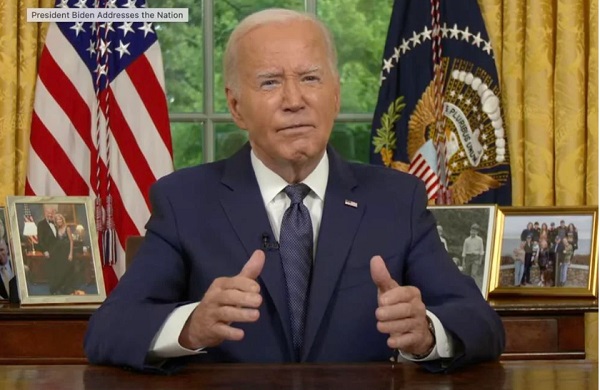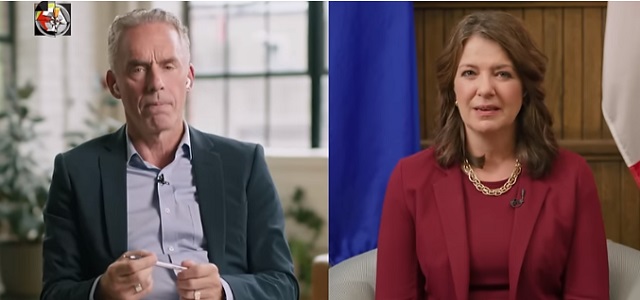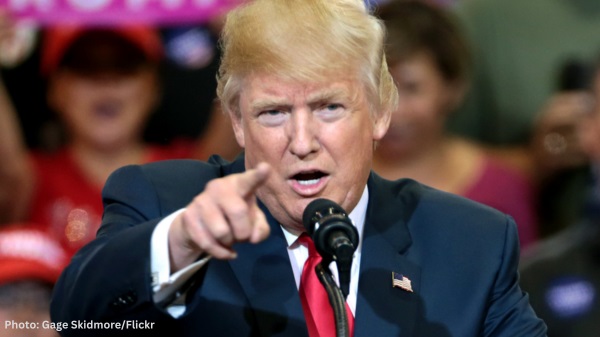COVID-19
Federal Court Judge Pulls Canada Back from the Brink
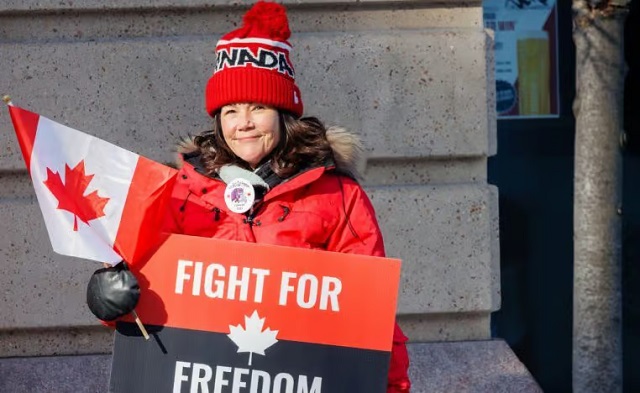
From the Brownstone Institute
BY
Trucks blocked border crossings in Coutts, Alberta and at the Ambassador Bridge in Windsor, Ontario. Local and provincial law enforcement dealt with those protests and cleared the borders.
The Canadian government’s use of the Emergencies Act was unlawful. The Trucker Convoy did not constitute a national emergency. So said a judge of the Federal Court. The decision may help to pull Canada back from the brink of authoritarian rule.
The Federal Court decision contains four conclusions. Two prerequisites for invoking the Emergencies Act, said Justice Richard Mosley, were not met. Moreover, the two regulations issued under it were unconstitutional. Predictably, the government has promised to appeal. For the government to prevail, an appeal panel would have to overturn all four. But there is a wrinkle, which I will get to momentarily.
Between 1963 and 1970, the Front de libération du Québec (FLQ), a separatist organization in Quebec, committed bombings, robberies, and killed several people. In October 1970, they kidnapped British trade commissioner James Cross, and then kidnapped and killed Pierre Laporte, a minister in the Quebec government. In response, Pierre Trudeau’s government invoked the War Measures Act, the only time it had been used in peacetime. In the years that followed, the invocation of the Act became regarded as a dangerous overreach of government powers and breach of civil liberties.
The Emergencies Act, enacted in 1988 to replace the War Measures Act, had higher thresholds. It was supposed to be more difficult for governments to trigger. Before Covid and the trucker convoy, it had never been used.
The Freedom Convoy arrived at Parliament Hill in Ottawa on January 29, 2022 to protest Covid vaccine mandates. The truckers parked unlawfully in downtown Ottawa. They violated parking bylaws and probably the Highway Traffic Act. Authorities could have issued tickets and towed the trucks away. But they didn’t.
In the meantime, protests in other parts of the country emerged. Trucks blocked border crossings in Coutts, Alberta and at the Ambassador Bridge in Windsor, Ontario. Local and provincial law enforcement dealt with those protests and cleared the borders. By February 15, when Justin Trudeau’s government declared a public order emergency and invoked the Emergencies Act, only the Ottawa protests had not been resolved.
The government issued two regulations under the Act. One prohibited public assemblies “that may reasonably be expected to lead to a breach of the peace.” The other outlawed donations and authorized banks to freeze donors’ bank accounts. On February 18 and 19, police brandishing riot batons descended on the crowd. They arrested close to 200 people, broke truck windows, and unleashed the occasional burst of pepper spray. By the evening of the 19th, they had cleared the trucker encampment away. Banks froze the accounts and credit cards of hundreds of supporters. On February 23, the government revoked the regulations and use of the Act.
Governments cannot use the Emergencies Act unless its prerequisites are met. A public order emergency must be a “national emergency” and a “threat to the security of Canada,” both of which are defined in the Act. A national emergency exists only if the situation “cannot be effectively dealt with under any other law of Canada.” “Threats to the security of Canada” can be one of several things. The government relied upon the clause that requires activities “directed toward or in support of the threat or use of acts of serious violence against persons or property for the purpose of achieving a political, religious or ideological objective.”
The trucker protests were neither a national emergency, Mosley concluded, nor a threat to the security of Canada.
There was no national emergency:
Due to its nature and to the broad powers it grants the Federal Executive, the Emergencies Act is a tool of last resort. [Cabinet] cannot invoke the Emergencies Act because it is convenient, or because it may work better than other tools at their disposal or available to the provinces.…in this instance, the evidence is clear that the majority of the provinces were able to deal with the situation using other federal law, such as the Criminal Code, and their own legislation…For these reasons, I conclude that there was no national emergency justifying the invocation of the Emergencies Act and the decision to do so was therefore unreasonable and ultra vires.
A threat to the security of Canada did not exist:
Ottawa was unique in the sense that it is clear that [Ottawa Police Services] had been unable to enforce the rule of law in the downtown core, at least in part, due to the volume of protesters and vehicles. The harassment of residents, workers and business owners in downtown Ottawa and the general infringement of the right to peaceful enjoyment of public spaces there, while highly objectionable, did not amount to serious violence or threats of serious violence…[Cabinet] did not have reasonable grounds to believe that a threat to national security existed within the meaning of the Act and the decision was ultra vires.
Nor were the regulations constitutional. The prohibition on public assemblies infringed freedom of expression under section 2(b) of the Charter of Rights and Freedoms. Empowering financing institutions to provide personal financial information to the government and to freeze bank accounts and credit cards was an unconstitutional search and seizure under section 8. Neither was justified, Mosley concluded, under section 1 of the Charter, the “reasonable limits” clause.
To prevail on appeal, the government would have to reverse all four conclusions. Justice Mosley did not make obvious errors of law. But there are a couple of odd bits. In particular, Mosley admits to doubts about how he would have proceeded had he been at the cabinet table himself:
I had and continue to have considerable sympathy for those in government who were confronted with this situation. Had I been at their tables at that time, I may have agreed that it was necessary to invoke the Act. And I acknowledge that in conducting judicial review of that decision, I am revisiting that time with the benefit of hindsight and a more extensive record of the facts and law…
Which brings us to the wrinkle. In April 2022, Richard Wagner, the Chief Justice of the Supreme Court of Canada, gave an interview to Le Devoir. Speaking in French, he characterized the protest on Wellington Street in Ottawa, where Parliament and the Supreme Court are located, as “the beginning of anarchy where some people have decided to take other citizens hostage.” Wagner said that “forced blows against the state, justice and democratic institutions like the one delivered by protesters…should be denounced with force by all figures of power in the country.” He did not mention the Emergencies Act by name. But his comments could be interpreted as endorsing its use.
The government’s appeal will go first to the Federal Court of Appeal but then to the Supreme Court of Canada. Its chief justice appears to have already formed an opinion about the dispute. Having made his public comments, the chief justice should announce that he will recuse himself from the case to avoid a reasonable perception of bias. That too would help bring Canada back from the brink.
COVID-19
Leaked documents: German gov’t lied about shots preventing COVID, knew lockdowns did more harm than good
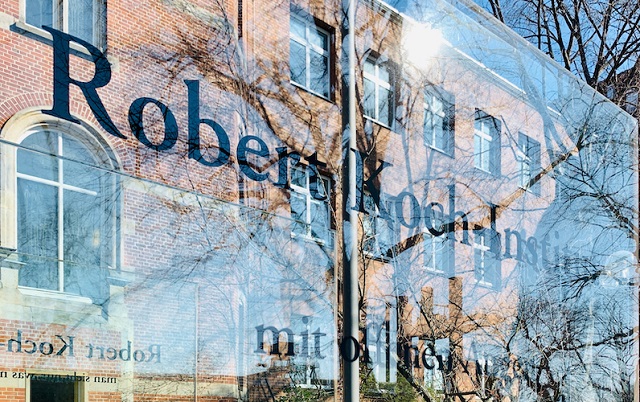
Berlin, Germany – 24 March 2020: The sign in front of the Robert Koch-Institut in Berlin.
From LifeSiteNews
Germany’s top health agency privately admitted that the idea of a ‘pandemic of the unvaccinated’ is ‘not correct’ but supported it because it ‘serves as an appeal to all those who have not been vaccinated,’ leaked documents revealed.
Leaked documents from a top German health agency show that politicians knew the experimental COVID shots did not prevent the transmission of the virus but advocated for jab mandates anyway.
On July 23, independent journalist Aya Velázquez published the un-redacted miutes of the German Robert Koch Institut (RKI, comparable to the U.S. Centers for Disease Control and Prevention) from its meetings regarding the COVID crisis between 2020 and 2023. Velázquez said she received the un-redacted documents from a whistleblower who used to work for the RKI. Parts of the so-called “RKI files” had already been published in March this year, after the RKI was forced to publish them due to a lawsuit. However, many key parts of the files had been redacted.
Velázquez wrote that the now fully un-redacted files show “that the RKI unfortunately spoke out in favor of both facility-based and general compulsory vaccination despite the knowledge of the lack of protection from transmission and serious side effects.”
The minutes from an RKI meeting on November 5, 2021, demonstrate that the idea of a “pandemic of the unvaccinated” that was propagated by politicians and mainstream media members was made up and not based on any facts.
“The media are talking about a pandemic of the unvaccinated,” the minutes state. “From a factual point of view this is not correct, the entire population is contributing. Should this be taken up in communication?”
The document noted that this phrase, although factually incorrect, “serves as an appeal to all those who have not been vaccinated to get vaccinated.”
It furthermore states that the minister of health “says it at press conference, presumably deliberately, cannot be corrected.”
During the fall and winter months of 2021 and early 2022, German politicians repeatedly used the term “pandemic of the unvaccinated” to blame those who refused the experimental COVID jabs for “the pandemic” and all COVID-related measures. The government also used this line of reasoning to ban the unjabbed from participating in many parts of society, including having certain jobs, attending restaurants, shopping at stores, and many other areas.
German radiologist and chairman of the World Medical Association Frank Ulrich Montgomery even spoke of a “tyranny of the unvaccinated,” a statement that he doubled down on a year later.
Epoch Times Deutsch said that during this time, the unvaxxed faced “a level of exclusionary pressure that is unprecedented in the history of the Federal Republic of Germany.”
During the press conference held by the team around the journalist Aya Velázquez, Professor Stefan Homburg said an entry in the documents from March 19, 2021, showed that the RKI already knew that the AstraZeneca COVID shot had caused several cases of sinus vein thrombosis, barely 11 weeks into the “vaccination” campaign.
Homburg is an emeritus professor of economics who was the head of the public finance department of the Leibniz University in Hannover and who became one of the most well-known and formidable critics of the COVID tyranny in Germany.
Homburg furthermore said that the RKI files showed that the RKI and the Paul Ehrlich Institut (PEI) deliberately gave false testimony in court, for instance, in regard to protecting German soldiers against transmission of the virus. “In this respect, they could now be charged in court for unsworn testimony with reference to these minutes,” said Homburg.
According to the available data, Homburg said that the overall situation can be described as a “deception of the public.”
He told the Epoch Times that “the authorities deliberately deceived the public for years at the behest of politicians.”
Journalist Bastian Barucker told the Epoch Times that the documents showed that when Health Minister Jens Spahn announced school closures in November 2021, the RKI “had long known that this was not correct.”
In parts of the RKI files that were already released in March, the minutes of a meeting from January 11, 2023, show that the RKI knew that lockdowns cause more harm than good. “The consequences of the lockdown are sometimes more severe than Covid itself,” the document stated.
At the conclusion of the press conference, Velázquez said, “The RKI protocols prove it: Our corona policy was not based on rational, scientific considerations.”
“Numerous political decisions, such as 2G [full participation in society only given to vaxxed or recovered individuals], the facility-based and planned general vaccination mandate, or the vaccination of children, were purely political decisions for which the RKI, as an authority bound by instructions, provided an alleged scientific legitimation,” the journalist said
Brownstone Institute
The Media Refuses to Accept Covid Reality

From the Brownstone Institute
By
By late 2020, the media and public health establishment had two obsessions. One of their obsessions involved forcing the public to wear masks, even though the mountains of data and several studies had already confirmed that they don’t stop the transmission of respiratory viruses. The second obsession was forcing everyone to take Covid vaccines, regardless of their actual efficacy, risk of side effects, age or underlying health, or the vaccines’ rapidly waning efficacy.
Neither of those obsessions has abated, though even the most extreme, hardened Covid extremists have acknowledged that the vaccines were flawed, mandates were a mistake, and side effects should be acknowledged.
The media, unwilling to give up on the increased power, influence, and moral judgment it gained during the pandemic, has refused to accept that it effectively ended years ago.
So it’s no surprise that media outlets have noticed that, as we’ve seen every single summer since 2020, cases have increased, predominantly across the Western and Southern United States. Thankfully though, Los Angeles media, of course it had to be Los Angeles, has determined the culprit.
The Media Refuses to Accept Covid Reality
Turns out it’s not seasonality causing the increase, it’s outdated Covid vaccines and a lack of public masking, of course!
NBC Los Angeles “reported” that Covid cases in California and Los Angeles have “doubled” in the last month. This sounds horrifying and scary, doesn’t it? Yet it again, as is so often the case with Covid coverage, is misleading.
Let’s take a look at the current daily average of new cases in Los Angeles County:
Cases are so low they’re functionally indistinguishable from zero.
You can see why the media is scared, given how dramatic this surge appears to be compared to those in the previous four years. And thanks to NBC’s crack reporting and expert analysis, we know why this terrifying increase is happening. Spoiler alert: it’s all your fault that you haven’t controlled an uncontrollable respiratory virus with individual behavior that has no impact whatsoever on the spread of the coronavirus.
“People aren’t necessarily wearing masks; they’re not required to in certain places,” nurse practitioner Alice Benjamin, referenced as an expert by NBA LA said. “We’re traveling, we’re getting out for the summer. We also do have some reduced immunity. The vaccines will wane over time.”
Nowhere in the story is it mentioned that the massive jump in Covid cases in late 2021 and early 2022 happened immediately after LA County Public Health issued a press release celebrating the county for achieving 95+ percent masking rates at indoor businesses. No one seems willing or able to ask this nurse practitioner why she believes wearing masks would reduce this “surge,” if it failed so spectacularly in previous surges.
Endless Misinformation from ‘Experts’
She wasn’t done with the misinformation though. Benjamin warned that not enough Angelenos are getting the “updated” vaccine, which explains the summer increase.
“If you got it in October and later, that’s generally the updated vaccine,” Benjamin said. “If you got it prior to October, double check because if you did get the bivalent which has not been phased out, we recommend you do get an updated vaccine.”
And according to her, everyone should get it. Because the CDC said so.
“Per CDC recommendations, anyone 6 months or older should have at least one of the updated Covid vaccines,” Benjamin said.
Though, of course, no one on the crack NBC Los Angeles team thought to ask Benjamin why the “updated” October vaccine would help against the now common FLiRT variant when it emerged six months after the “updated” vaccine was released. Especially when the “study” process for booster doses is effectively nonexistent anyway. Pfizer and Moderna churn out a “targeted” dose that is supposed to protect against a variant that’s no longer circulating, never has to show any real-world benefit, and the regulatory agencies sign off on it, while the CDC recommends everyone get it.
Rinse, repeat.
Nor did anyone ask her what possible rationale there could be for forcing six-month-old babies to get vaccinated with a booster that has no studied efficacy against the currently circulating variant.
Her comments and the media reaction exemplify the problems with Covid discourse that started in 2020 and will apparently continue forever. A complete and purposeful ignorance of the facts, the data, and the evidence base. A willingness to advocate for the same sort of restrictions and interventions that have already failed. Ignorance of the booster process and endless appeals to public health authorities. Even though those authorities have made countless mistakes and refused to update their findings after being proven wrong.
The obvious question is: How does this type of absurdist discourse ever end? The answer, as we continue to see, is it doesn’t.
Republished from the author’s Substack
-
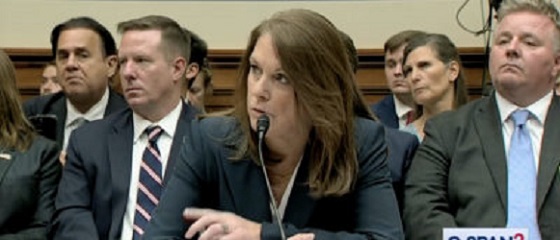
 International24 hours ago
International24 hours agoSecret Service Repeatedly Rejected Offers To Use Drones At Deadly Trump Rally, Whistleblower Says
-
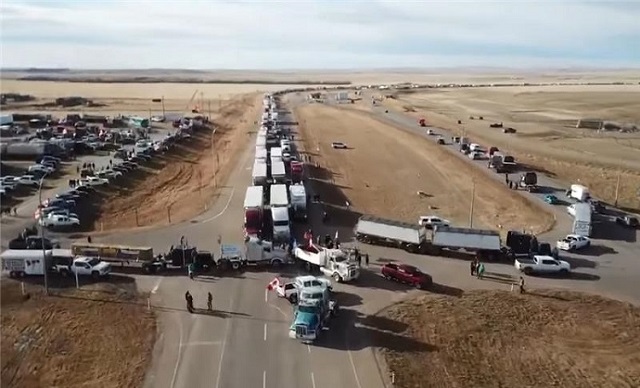
 Alberta2 days ago
Alberta2 days ago‘Fireworks’ As Defence Opens Case In Coutts Two Trial
-

 Business1 day ago
Business1 day agoEstonia’s solution to Canada’s stagnating economic growth
-

 International24 hours ago
International24 hours agoHouse Passes Bipartisan Resolution Establishing Trump Assassination Attempt Task Force
-
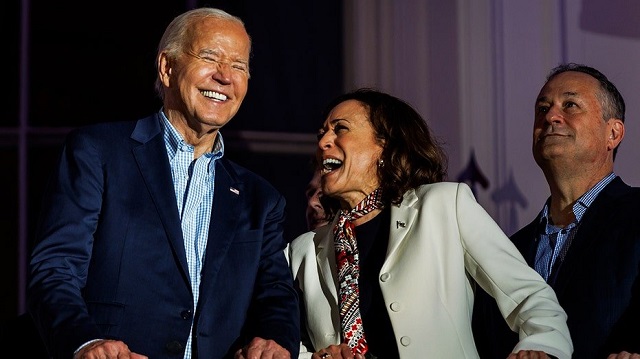
 Bruce Dowbiggin17 hours ago
Bruce Dowbiggin17 hours agoGarbage In, Garbage Out: The Democrats 2024 Election Coup
-
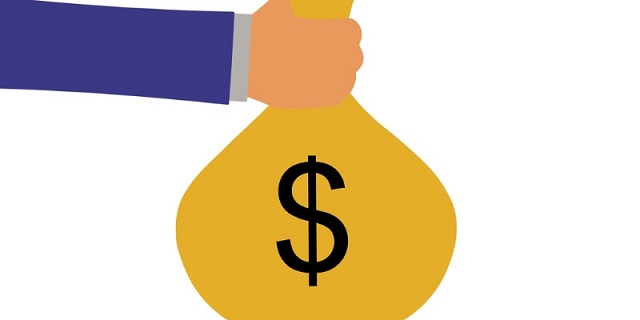
 Alberta14 hours ago
Alberta14 hours agoAlberta awash in corporate welfare
-

 COVID-192 days ago
COVID-192 days agoLeaked documents: German gov’t lied about shots preventing COVID, knew lockdowns did more harm than good
-

 Business2 days ago
Business2 days agoFederal government seems committed to killing investment in Canada



